Indo-Pacific Strategy: Implications for the Region
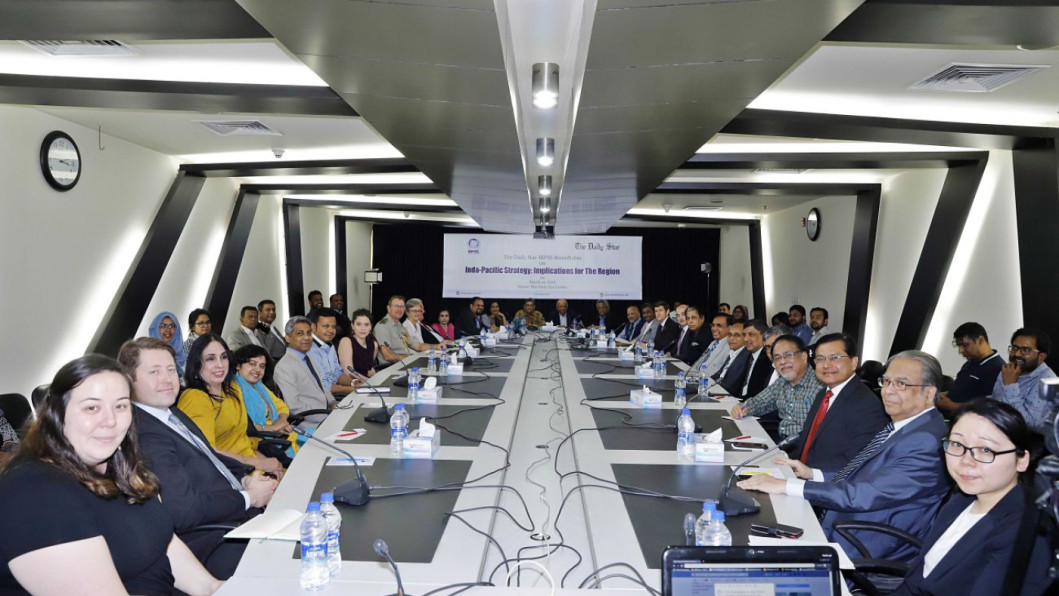
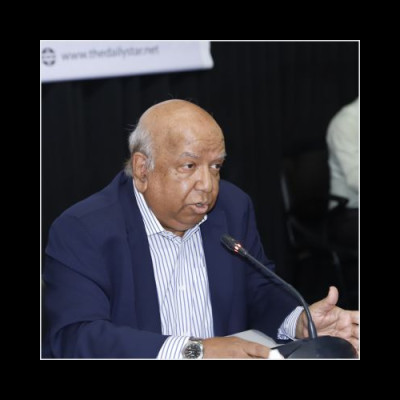
Maj Gen ANM Muniruzzaman, ndc, psc (Retd), (Moderator), President, Bangladesh Institute of Peace and Security Studies (BIPSS)
The origins of the term “Indo-Pacific” can be traced to a speech delivered by the Japanese PM Shinzo Abe to the Indian parliament. In it Abe did not refer to the term Indo-Pacific; rather he referred to a book by Mughal Prince Dara Shikoh who, in describing the dynamic coupling of the seas, meant that there's a natural confluence of the Indian and Pacific Oceans. So, in some ways, it goes back to the time when the Mughals identified that the two seas have a coupling effect. Then in 2010, Secretary Clinton described the importance of the Indo-Pacific basin as a global trade and commerce hub. In 2012, Professor Raja Mohan, in his book Samudra Manthan, argued that the seas of the western Pacific and the Indian Ocean must be seen as a single, integrated geo-strategic theatre. Therefore, the currency that it gained later on led to the Japanese PM in 2017 coining the term “Free and Open Indo-Pacific,” or FOIP. In 2017, in the US government's national security strategy paper, or NSS, the Indo-Pacific was described as a single, geo-strategic region.
Indo-Pacific will play the primary role in the geo-strategic and the geo-maritime strategic competition of the rising powers; it elevates maritime thinking in our strategic discourse; and it is an interplay between geopolitics, geo-strategy, geo-economics, and geo-energy. Therefore, the Indian Ocean today is becoming the centerpiece of all geo-strategic play.

Amena Mohsin, Professor, Department of International Relations, Dhaka University
The term “Indo-Pacific” was first used in the diplomatic parlance by Dr Gurpreet Khurana, Executive Director of Delhi-based National Maritime Foundation. Dr Khurana, in an interview with The Diplomat in 2018, said that the terms “Indo-Pacific strategy” (IPS) had two major dimensions. On the one hand, he looked upon it as a geopolitical construct. He said that it is important to link geo-economics and the ocean realm and that the maritime underbelly of the Indo-Pacific region should be considered as a singular and integrated whole. He also pointed out that the term “Indo”-Pacific puts the primacy of India as a state in the forefront, whereas, in the term “Asia”-Pacific, the role and primacy of India are lost. These were his observations.
This strategy was adopted in the backdrop of China's opening up in the 80s. The Trump administration has also emphasised upon the policy relating to Indo-Pacific. Some scholars argue that it was a reshaping of the Obama administration's policy of the Asia-Pacific which also included the same dimensions, but if one looks at it critically, one would find that one of the key features of the Obama administration's policy was people-to-people contact and people-centric diplomacy. Since the IPS is still at a formative stage, we are yet to see whether a people-centric approach will become a focal point but as a political analyst myself, I would like to see that happen.

Ambassador Earl R Miller, US Embassy in Bangladesh
The United States' Indo-Pacific vision is a whole-of-government effort to support a free and open Indo-Pacific where sovereign independent nations can prosper in freedom and peace. The vision focuses on three areas: economy, security and governance. It's rooted in the fact that the US is an Indo-Pacific nation itself and is deeply invested in the broader region. We work with key partners like Bangladesh to protect and enhance a rules-based order in the Indo-Pacific that respects principles such as peaceful resolution of disputes, freedom of navigation, an open and transparent investment environment and strong and responsible governing institutions. Bangladesh shares many of these goals of building a more prosperous and secure interconnected region, and with its strategic location and fast-growing economy, it is poised to play a central role in the Indo-Pacific. We value our longstanding security cooperation with Bangladesh and have expanded it as part of our vision. Last year, we allocated USD 40 million in additional security assistance to help Bangladesh improve its coastal radar system, modernise and enhance its patrol boat fleet, and provide training and support of expanded maritime interdiction as part of our Bay of Bengal initiative. We are also cooperating in its internal security.
Another key priority is to accelerate private sector-led economic growth, including through US companies which have a strong track record of sparking innovation and raising labour standards. The US conducted USD 1.8 trillion in two-way trade with the Indo-Pacific in 2017. And the value of direct US investment in the region reached USD 940 billion, making us the largest source of the region's foreign investment. We have launched new initiatives under the Indo-Pacific vision to include in July USD 113 million to expand our partnership with the private sector in the areas of energy, digital economy and infrastructure. In November, the US announced a new Indo-Pacific transparency initiative that focuses on sound, just and responsive governance to empower the region's citizens, combat corruption and strengthen the nation's autonomy.
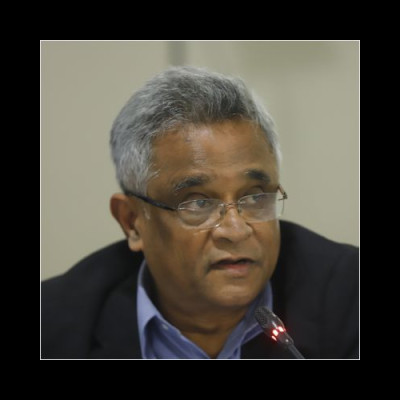
Shamim Ahmed, Former Ambassador
The IPS is a developing concept and hasn't yet appeared in the form of a discernible shape. As such, it would be a bit presumptive to say what role diplomacy will have to play in this. Diplomacy is of course an essential vehicle in the conduct of inter-state relations. One thing is discernible and that is China's growing influence and Beijing's assistance programmes in the form of its Belt and Road Initiative (BRI). India's role in the Indo-Pacific will be important. India will most likely tread the path of caution in terms of getting too tightly embraced by Washington. Delhi would be hesitant and possibly wouldn't want to be too active in this arrangement and we will have to see how this shapes up. The IPS as a trade and economic cooperation arrangement would have more enthusiastic takers than an arrangement where it becomes too security-oriented.

Parvez Karim Abbasi, Assistant Professor, Department of Economics, East West University
Already the conversation about FOIP has been overshadowed by BRI. Whatever protestations are made, in popular perception across the Indo-Pacific region, this is a bit of a “too little too late” approach by the Americans in terms of containing growing Chinese influence and this should not have been. The Chinese have made very good use of geo-economic strategies, the broad components of which are trade policy, investment policy, trade assistance, boosting regional connectivity, infrastructural investment, and financial and monetary policy. BRI has already had a head start whereas the IPS is a work in progress. BRI is about roads, ports, bridges, energy connectivity, fibre optic connectivity, satellites, digital connectivity, etc. I think of this as AIIB fast turning into a viable substitute for the World Bank. These are many of the issues that developing countries have to contend with, and there is a need for infrastructural investment in the Asian region and China has stepped in. Matching it dollar for dollar would be difficult though the Japanese have started their own initiatives. Japan is the largest development donor in Asia.
Another issue is the lack of consistency in US policy. The death knell was sounded with the US' withdrawal from the Trans-Pacific Partnership (TPP) which was the 21st-century answer to Asia's emergence as the economic cockpit of the world. As a result, China stepped in with the Regional Comprehensive Economic Plan (RCEP). Now, this insistence upon negotiating individual free trade agreements (FTAs) or traducing traditional allies for not contributing enough has led to misgivings. It's a choice between the devil and the deep sea. The US is one of our largest export destinations and investors. Even then, it is a matter of great sadness that we have not been able to obtain duty-free, quota-free preferential access despite campaigning for it for so long. In terms of FOIP, what is the benefit that's being offered? President Trump has singled out India as a country that imposes heavy amounts of tariff on American products. Yet you want India to comply with FOIP. These mixed messages will not serve anyone's purpose. Developing countries will face a paucity of funds, and have to strike a balancing act.
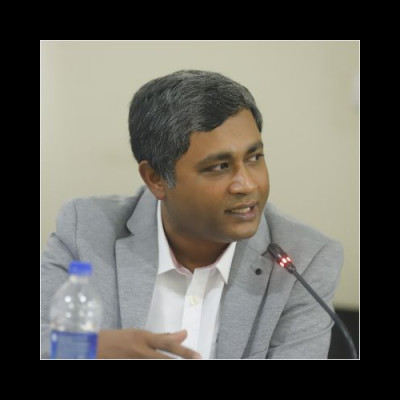
Dr Niloy Ranjan Biswas, Associate Professor, Department of International Relations, Dhaka University
In the context of South Asia, there are three levels of analysis: impact of an Indo-Pacific strategy on South Asian politics and South Asian strategy broadly; how this is going to be implemented in the context of China's BRI and FOIP led by the Quad (Will this bring back a Cold War paradigm—balance of power vs bandwagoning?); and the methodology (What methods and tools will be applied? Will it heavily rely on building ports, heavy industries, connecting different coastal areas around the Indian and Pacific Oceans? How are people living near the ports going to be affected?). Sometimes it looks as if the choice is between the bandwagon or no bandwagon. But Bangladesh's foreign policy has shown that we have benefited from both strategies, or it may even be that it's a bit premature to talk about whether we have reaped full benefits of either BRI or FOIP. We have tried to maintain a relationship with both these sides.
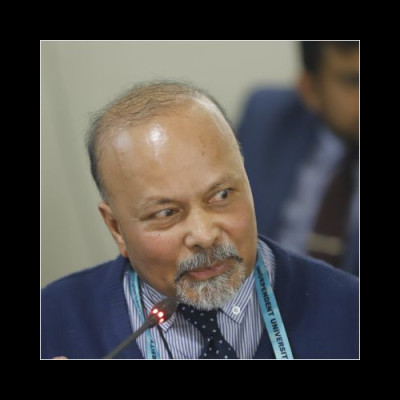
Professor Dr Imtiaz A Hussain, Head, Global Studies & Governance Programme, School of Liberal Arts and Social Sciences (SLASS), Independent University, Bangladesh (IUB)
In international relations, we are also familiar with the concept Asia-Pacific which can be traced back to 1989 in APEC. But since that time, there have been so many developments leading to what we know as FOIP. That was the first year Japan had a recession and one of the things it tried to do is open up Southeast Asia for economic development. At the same time, India had embarked upon neo-liberalism and Narasimha Rao opened up a policy called Look East which PM Modi converted to Act East, and some scholars say that it forms a ring around China. Japanese PM Shinzo Abe has proposed an Afro-Asian Growth Corridor in which India is going to play a huge part. It's an alliance between Japan and India to open up this region. This is in response to the BRI. These are some developments happening on the non-security frontiers that shouldn't be ignored when we look at the security dimensions. China is not necessarily the only target.
The Indonesian foreign minister in 2013 also called this region an “engine of global growth.” With the US, you had the TPP which some argued formed a ring around China. But the idea behind it was to slowly induce China to join the TPP, and although it was disbanded last year, I think it has been revived by Japan. Japan has demographic problems domestically which means it needs external alliances and the country cannot afford to get into security-related problems—this means they must emphasise the economics.
Look at some recent developments, for example, Australia purchasing submarines from France; the latter has lots of nuclear testing in the Pacific. If you look more closely, you see that it is the largest power in the Pacific with 3 million miles if you count it in terms of Exclusive Economic Zones. If Australia gets in, the UK will want to join in, especially in the post-Brexit era, then you also have the US. That's a nice hypothetical alliance formation right there.
Do we call it Indo-Pacific or Asia-Pacific? The former emphasises local powers (India, China, Malaysia, Indonesia, etc) and points to a shift from the Atlantic Order to an Asian Order. If you call it the Asia-Pacific, that would point to the European powers being more prominent.

Brig Shahedul Anam Khan, ndc, psc (Retd), Associate Editor, The Daily Star
The Indo-Pacific will continue to shape global events. It in a way proves the prediction that the 21st century will be the Asian century dominated by the rising powers of the Indo-Pacific, particularly China, India and Japan. India and China are emerging as Asia's super-powers, and we are seeing China trying to establish an enlarged footprint not only in its own backyard, but beyond too. The Maritime Silk Route is perhaps one of its manifestations. India's Look East Policy has transformed into Act East Policy. There's a power rivalry. All these developments can be captured in the term “Indo-Pacific”. And therefore, this new reality is only but natural. But there's another camp which thinks otherwise—that this is not natural and that the Indo-Pacific is an imagined spectre of the rise of China. It's not innocuous or innocent. Many regional countries do not believe that the Indo-Pacific will lead to inclusive growth. Therefore, there is a need to examine this formulation—Indo-Pacific—critically, especially in terms of its strategic aspects.
There's a change of US focus in this region. The US laid out in its policy in 2017 what its geopolitical interests were in this area. In the last two years, the Indo-Pacific has ranked higher than Europe in terms of importance to the US. Now, will this area assume a distinct character of a separate strategic region? How will the power politics develop in the Indian Ocean Region? Can the regional countries exist in harmony? Can we consider the area as a single regional construct? What implications does it have for China-US rivalry and also for the Asean countries? There are flashpoints within the Indo-Pacific that force countries to modulate their individual foreign policies. These are some questions we need to think about. I believe that it is not going to be a single strategic construct. The very size of the area militates against that, and there are many flashpoints for it to have cohesion.
There's a difference between soft power of China and the US. China's soft power is in building roads, ports, bridges, education, etc, whereas the US' soft power is primarily predicated on military hardware. Some suspect that the area may be engulfed in what one author calls the Thucydides Trap, where a rising power creates enough consternation with the established power that they engage in a conflict which ends in the downfall of one.
What will be the Asean response to all this? I think a rift within Asean is apparent, from what we've seen in the last few years. Each of them is choosing to deal with these powers in its own way in addressing issues related to this area. There are now three groups. One wants to counter China. One is undergoing a shift in policy, e.g. Myanmar—countries that prefer economic incentives rather than military protection. Singapore is keeping its distance from the issue although it is more aligned with the US, and it's also very quiet on Quad. Brunei, for example, differs strongly with China on certain issues; and although it claims a part of the South China Sea, it's silent on the US-China dispute. Philippines is playing both sides, but perhaps there's a tilt towards China. Indonesia is perhaps the only country that wants Asean to be the only axis of the IPS.
What will be India's role? The whole rationale of calling it Indo-Pacific is to draw importance to India. The US considers India as a main actor in its IPS. The question is: Will India beat the war drums? I agree with those who have said that there is reluctance on the part of India to be drawn into this confrontation. But India will not give anyone a free pass. The Korean Peninsula is another key area of focus. Also, what will be the role of Bangladesh? How will Bangladesh formulate its policies to deal with India, China and the US?

Major Gen Muhammed Firdaus Mian, psc (Retd), Former Chairman and Lifetime Honorary Adviser of BIISS
A paper titled “Global Trends 2030: Alternative Worlds” was published in 2012. It talks about how the characteristics of the globe are going to change. They have identified four mega-trends: (i) individual empowerment is going to play a big role; (ii) diffusion of power; (iii) demographic patterns are going to change; (iv) migration will increase. But I also think food, energy and water are also going to play a major role. This is one aspect that we need to consider when we think about how the IPS will be implemented.

Shahidul Islam, Secretary-General, BIMSTEC
The IPS is still in the making and one cannot be a part of something that doesn't fully exist. But if we talk about the Indo-Pacific community, then there are many things in common. We believe in democracy, free economy, freedom of navigation. We also have common interests—more trade, more interconnectedness. BIMSTEC as a regional group would be very happy to be part of this community because that is more inclusive than the IPS—the latter having strong military connotations. We will have to wait and see how this will finally take shape.

Professor Selina Mohsin, Former Ambassador
Is it not relevant to talk first about the large countries and then highlight how their strategies have affected the other countries around them? I would say the main issue is the rise of China which has led to problems with the US. These questions and counter-questions have led to problems not only in the countries surrounding it but also in the US and elsewhere.

Rear Admiral ASMA Awal, NBP, OSP, ndc, psc, MDS, MBA (Retd), Former Ambassador and Assistant Chief of Naval Staff
BRI is in its fifth year now. It has lots of pitfalls but it's definitely well-structured. There's the China-Pakistan Economic Corridor, Bangladesh-China-India-Myanmar Economic Corridor, and Trans-Himalayan Economic Corridor. Myanmar has been under pressure from the West and it has veered towards China as a result. Just recently, the two countries signed the China-Myanmar Economic Corridor. These things are perceptible. My question is: If the Quad becomes Quad-plus, which countries are going to be added to the Quad? Is the formulation of the Quad-plus going to be a US-led initiative of democracies?

Lt Col Dominic Spencer, DA British High Commission
UK considers itself an Indo-Pacific country, because of its relationship with the Commonwealth, its responsibilities within the P5, etc. We have real investment here. All elements of the strategy—economic, security and governments—are crucial. Investments have to be made in security and governance—not just inter-state but also intra-state. We have to make sure that the rules-based international system remains in place and the best way to do that is through partnerships with governments such as that of Bangladesh and like-minded states in the region.

Ambassador Peter Fahrenholtz, Embassy of Germany in Bangladesh
Europe is the largest trading partner of Bangladesh. We may also be the largest donor to Bangladesh. Europe can project its hard power but looking at history, we prefer using soft power. Someone mentioned "hectoring" when it comes to values—maybe it's not the worst thing in the world. The values that we try to project are universal such as democracy, rule of law, justice, and freedom. We may gain a bad reputation from "hectoring" when it comes to values but we mean well as partners of countries such as Bangladesh.

Jacob J Levin, Political Officer, US Embassy in Bangladesh
The theme of “containment” has come up along with China and third countries. Having served in China myself, this idea doesn't resonate with me. With every relationship you have points of competition and parts where you differ and we are not shy about sharing that. But we also have points of agreement. At the same time, we value our relationship with Bangladesh and third countries for their own merits. The IPS is a positive vision for our engagement and not an effort aimed at any third country.





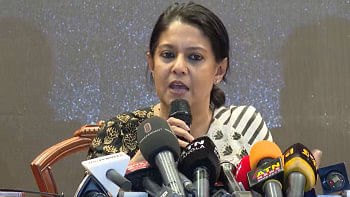
Comments